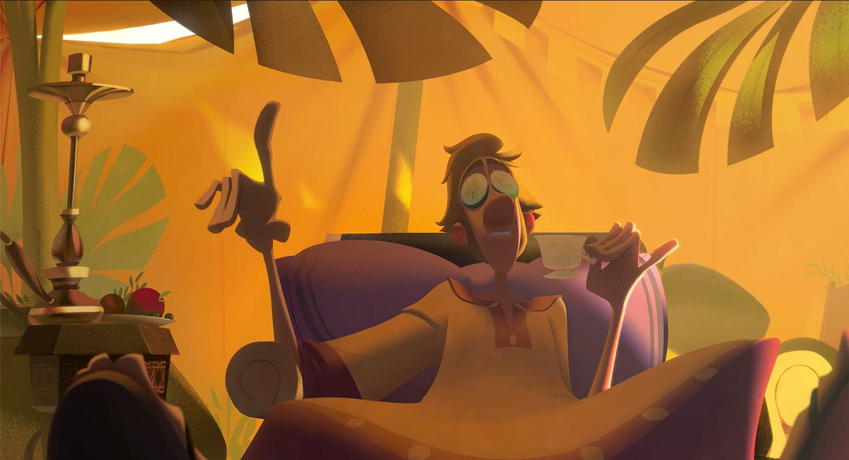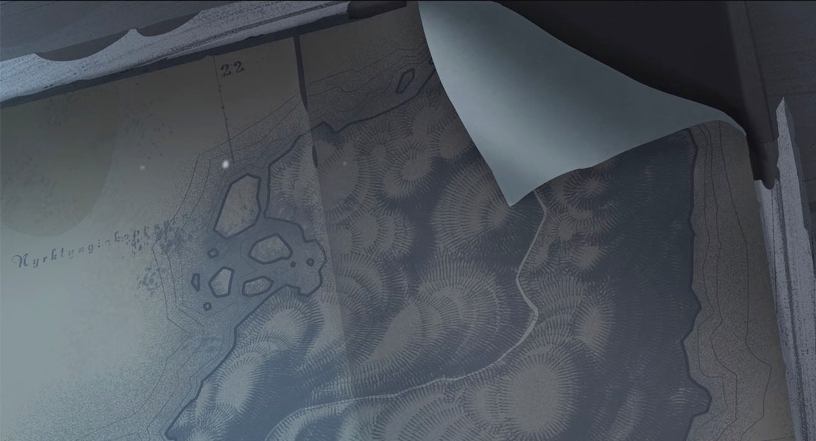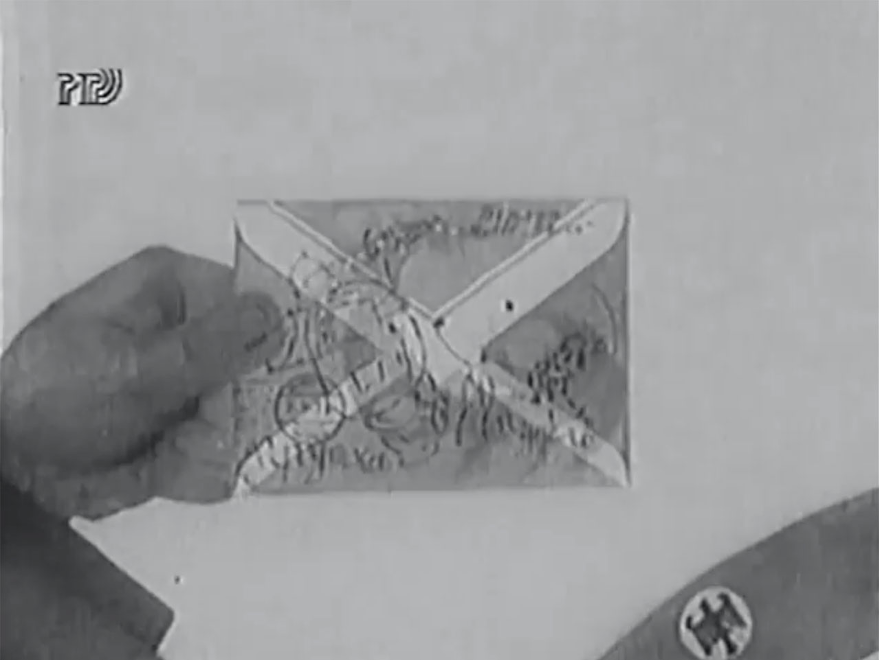
The first animated feature that Netflix has produced exclusively for its online streaming platform is notably a return to 2D animation in an industry where 3D animation dominates: Klaus (2019). However, this film likewise aspires to dimensionality and depth even as it promotes flatness to challenge 3D’s place at the top of the animation hierarchy. The creators of Klaus used custom digital tools to make 2D characters and environments look more dimensional thanks to volumetric lighting, a technique that makes the film noticeably different from both the thin-line 2D animation that floods television and 3D computer-generated animation that dominates the box office (Failes 2019).
New tricks aside, I want to focus on the politics of truth and flatness in Klaus’s return to 2D tools and what sense it makes in the context of Netflix’s online streaming platform. For one, Klaus shows us the path not taken by Hollywood animation studios in their all-or-nothing approach to 3D animated features. While the premise of Klaus is a re-imagined Christmas origin story, it also provides an origin story for Netflix, which—we may have forgotten—once came to us through the mail. Though Klaus aspires to compete with other blockbuster animated features through its use of form and volumetric lighting, its ambivalence with regard to dimensionality speaks to larger truths about our beloved myths.
The story of Klaus revolves around a postman named Jesper, the son of a wealthy Postmaster General, whom we first meet lounging around the postman’s training academy (Figure 1). From Jesper’s first scene, the film mocks the association of 3D with verisimilitude and makes its own claim to fullness and depth. As Jesper sits luxuriously under a couple of palm trees, cucumber slices resting over his eye-lids, he is interrupted by the drill sergeant who comes to deliver a letter. This opening scene also makes the first noticeable use of volumetric lighting, as Jesper basks in a warm glow, signifying his privileged position as the postmaster’s son.
In a visual joke about the 2D character’s noticeably 3D appearance, Jesper peels the cucumber slices off his eyes and flicks them aside, telling the sergeant that someone else is covering his training exercises (a dummy which Jesper has affixed atop a horse). Jesper’s dummy sits stiff and scarecrow-like, a stand-in not only for Jesper but the entirety of 3D animation. In this opening scene, the film not only establishes its characters and its world, but also showcases its use of form, light, and shadow to create depth in a 2D environment.

Jesper is soon shipped off to Smeerensburg, a fictional town on an island far to the north. We learn about Jesper’s fate and the town of Smeerensburg much as we eventually learn about a woodsman named Klaus who lives at the northern tip of the island: through the world’s graphic depiction on maps. It is only when Jesper flattens out the loose corner of his Smeerensburg map that we see the small house where Klaus lives (Figure 2). Flatness becomes a central device in revealing the origin of the most beloved Christmas myth, in this case, a precise point on Jesper’s map. The map also shows us that Jesper’s world is not our world, and yet Klaus appeals to us because it is a more plausible origin story and explanation than the ones children are often given. The film even ties in the real-life Sami culture in a bid to broaden the scope of the Eurocentric story. In these scenes, flatness is on the side of truth, the kind that, paradoxically, can only come through fictional storytelling and animation.
Ultimately, the centrality of flat things in Klaus offers the opportunity for a more ambivalent claim to realism. Maps, letters, and a child’s drawing all help lead Jesper to Klaus and motivate Klaus to start making toys for the town’s children. At first, Klaus’s magic is the stuff of rumors and misapprehension. According to the film, a Christmas tradition came about because of a postman who was stationed in Smeerensburg and had no choice but to deliver letters. By the end of the film, it is Jesper, the humble postman (though the son of a wealthy Postmaster), to whom we owe our Christmas spirit—and not the magic of the man in the red suit.

Furthermore, the film’s claim to realism through flatness evokes an earlier moment in twentieth-century modernism, one that points to the larger stakes of our animated myths. I am referring to the Soviet animator Mikhail Tsekhanovsky, whose 1929 animated short Pochta (Figure 3), like Klaus, also makes its claim to realism through flatness while celebrating the humble postman. Alas, Tsekhanovsky’s Soviet Constructivist style would not be appreciated by the Communist Party after the adoption of Socialist Realism in 1934 (Bendazzi, 2016a: 174-175). To capture the imaginations of children and compete with the cultural imperialism of Disney, Soviet animation through the 1940s embraced a full drawing style and focused on national folklore; however, a Constructivist influence slowly re-emerged to challenge this official style in the work of Fyodor Khitruk, Yuri Norstein, and Andrey Khrzhanovsky (among others) (Bendazzi, 2016b: 280). While Klaus remains far from a blunt critique of official government policies circa 2019, its embrace of 2D in a 3D world allegorizes our daily encounter with the politics of truth.
The bigger myth that Klaus promotes is that we somehow have more privileged access to the truth thanks to the great disruptors of the twenty-first century. While there is more content thanks to streaming platforms like Netflix, the vast array of stories does not provide a shared narrative about our current, globalized and globalizing culture. Klaus’s ambivalence is our ambivalence, too. Are we any better informed or represented now that we can stream thousands of titles at home? Unlike the townspeople of Smeerensburg, our tribalism may not be so easily resolved through the mail.
References
Bendazzi, Giannalberto (2016a) Animation: A World History, vol. 1, (Boca Raton: CRC Press)
Bendazzi, Giannalberto (2016b) Animation: A World History, vol. 2, (Boca Raton: CRC Press)
Failes, Ian (2019) “Here’s What Made the 2D Animation in ‘Klaus’ Look ‘3D’,” befores & afters (November 14), available at: https://beforesandafters.com/2019/11/14/heres-what-made-the-2d-animation-in-klaus-look-3d/
Tim Ridlen is a Professor of Instruction at the University of Tampa in the department of Film, Animation, and New Media. He has taught courses on the history, theory, and production of media art at the City College of New York, Al Quds Bard Honors College in East Jerusalem, and at the University of California San Diego.
